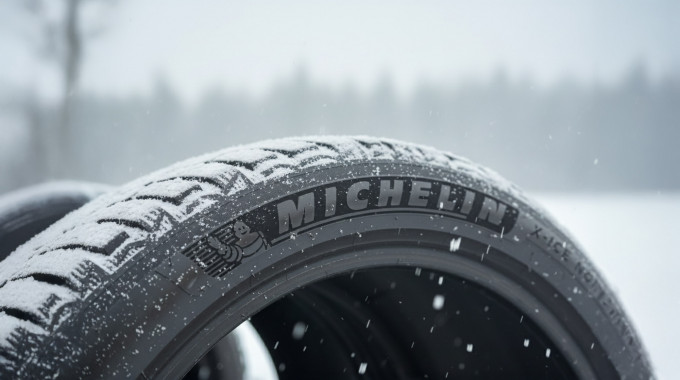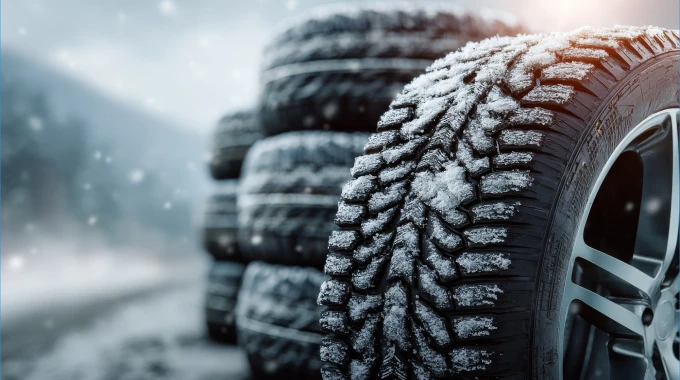
Review: Continental IceContact XTRM Winter Tire
Winter tires are big business in Canada. Around 60% of the 22-24m tires sold here each year are winters, compared with around only 5% in the USA. Even outside Quebec, where their use is mandatory, 63% of drivers use winter tires, according to a 2022 study by the Tire and Rubber Association of Canada.
The country also has some unique winter conditions, with prolonged periods of deep cold and large areas where it’s the norm to drive on ice, or on slush from salted snowmelt. It was for this reason that Canadian tire distributor, Groupe Touchette, which supplies everything from independent repair shops to OEM dealerships, worked with Continental to develop the IceContact XTRM winter tire for the Canadian market.
Design of the Conti’s IceContact XTRM - Studded and Studless Versions
Unusually for a winter tire, the XTRM is available in both pre-studded and studless versions. They share the same soft rubber compound to handle extremely low temperatures and a V-shape tread pattern with more open lateral grooves than on some other winter tires, to account for Canada’s slushy roads. The connected centre rib and siping (small, wavy grooves) are designed to improve steering response. Pockets and ridges in the sidewall aim to provide traction in deep snow.

Where fitted, the XTRM’s 130 studs use aluminum stud bodies and a TriStar head design. They’re located to maximize grip but minimize tire-road noise. The studs are chemically coated before insertion and then subject to an additional curing process that forms a chemical bond between the stud body and the surrounding tire compound.
Conti believes that as a result, stud retention should be up to four times higher than without the coating, providing up to 5% more grip on ice.
Here’s more on studded winters and whether they’re legal in Canada.
Availability and sizing
The tire was launched for the winter of 2020-21 and is available through Touchette’s retailers nationwide. North American sizing isn’t always a given for winter tires that come to Canada from Europe or elsewhere, but the IceContact XTRM was designed from the start to cater for trucks and large SUVs as well as smaller vehicles.

There are now 91 different sizes on sale, up from 46 at launch, each with pre-studded and studless variants and encompassing rim sizes from 15in to 22in. All are T speed-rated for use up to 190 km/h.
IceContact XTRM competitors
Having both pre-studded and studless versions broadens the XTRM’s competitive set. For a studded rival, think Nokian Hakkapeliitta 10. For non-studded competitors, there’s the Nokian R5, Michelin X-Ice family – including the X-ICE Xi3 we reviewed here – or several Pirelli Sottozero products.
Conti has other winter tires of its own, of course. When we asked the company to differentiate the IceContact XTRM from its other designs, it highlighted the XTRM’s pre-studded option as suiting consumers looking for extreme ice performance in harsh winter conditions, as opposed to studless-only products like the VikingContact 7, which is claimed to offer, “excellent performance in ice and snow conditions”.
Performance: how does the IceContact XTRM perform?
At the tire’s launch, Canada Drives tested the IceContact XTRM on snow and ice tracks at the iCAR facility in Quebec. We drove cars and trucks fitted with both studded and non-studded versions.

We didn’t feel much difference between the studded and non-studded XTRMs when driving a GMC Yukon on groomed snow on a winding road, but as you’d expect, the studded tire stopped a little faster. We’d suggest that the non-studded version is well suited to customers who drive mostly on snow in the winter.
On ice, it’s a different story. A Volkswagen Jetta test vehicle confirmed the benefit of the studs with a much shorter stopping distance. Meanwhile an AWD Subaru Impreza on sheet ice was much easier to recover from understeer (when the front wheels wash out during cornering) with the studs fitted.
Groupe Touchette claims 3-5% improvements in ice braking (and snow traction) for the IceContact XTRM, compared with the best of its competitors, but we didn’t have instrumentation available to substantiate those claims.
Verdict: is the IceContact XTRM worth it?
Tires are often a product where greater expense translates to better quality – perhaps not always at the time of purchase, but certainly in terms of maintaining high performance over the long-term.
That’s a strong reason to consider premium products like the IceContact XTRM, which stands out for its targeted mix of Canada-ready performance features and its availability in a huge range of sizes – with or without studs.
We weren’t able to pit it directly against its rivals – we’d always recommend referring to independent comparison tests before parting with your money on snow-rated rubber – but Continental’s IceContact XTRM is a high-performing winter tire from a manufacturer with a track record of innovation and quality, backed by a six-year/128,000km warranty and three years of roadside assistance.







